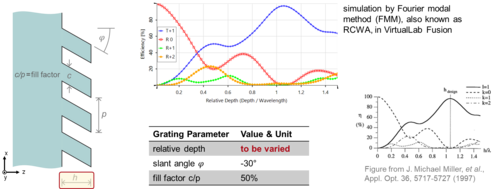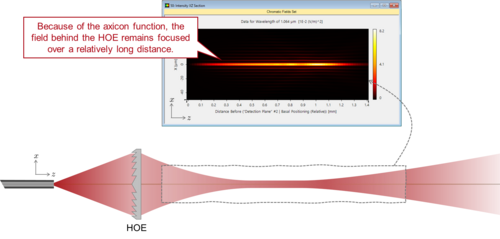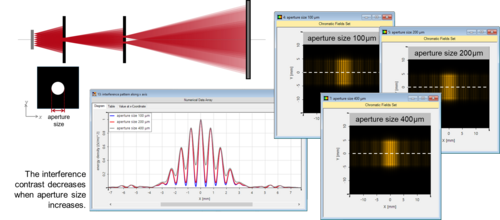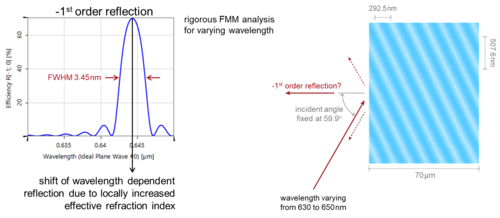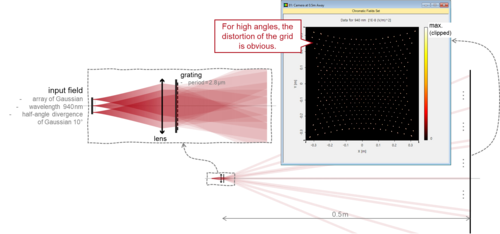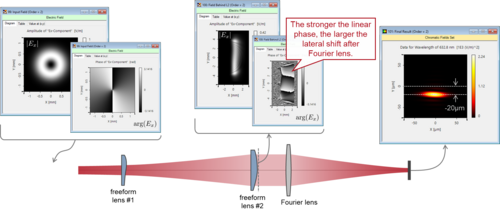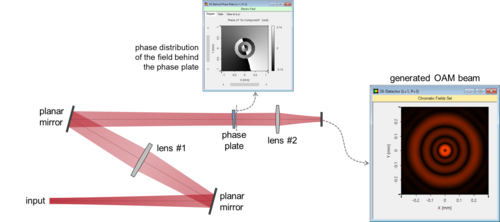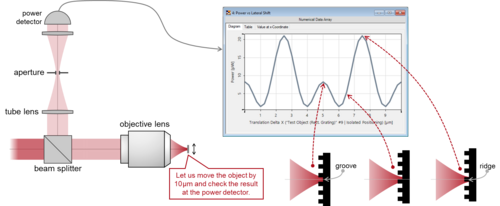What’s new in our Optical Modeling and Design Software?
Register now for our Online Training on Grating Modeling & Design
Learn from our optical engineering experts how to use VirtualLab Fusion efficiently. The Online Training will be held twice to adapt to different time zones worldwide.
01 – 04 February 2021 | 17:30 – 20:30 (CET)
08 – 11 February 2021 | 08:30 – 11:30 (CET)
Bessel Beam Generation
Bessel beams, because of their unique property of a tight longitudinal focus, are found useful for material processing, optical tweezing, and other applications. In VirtualLab Fusion, we demonstrate the generation of such beams. In the first example, a holographic optical element (HOE) is designed to convert the output of a fiber into a Bessel beam directly; the second example investigates the effect from the round-tip of the axicon on the generated Bessel beams.
Read moreYoung’s Interference Experiment with Partially Coherent Light
The double-slit interference experiment was originally conducted by Thomas Young in the early 1800s. It shows the wave-like nature of light and serves as an important technique for spatial coherence measurements. We reproduce Young’s experiment in VirtualLab Fusion, with both a single point source and an extended source. We investigate in particular the coherence properties of the extended source by checking the change in the contrast of the interference fringes.
Read moreSpectral and Angular Sensitivity of Special Gratings
Special grating designs enable the engineering of their properties. For example, holographic volume gratings and resonant waveguide gratings are well known for their sensitivity with respect to wavelength and incidence angle. Due to such properties, they are often applied in optical metrology. We analyze these two types of gratings in VirtualLab Fusion, particularly, by checking their spectral and angular sensitivity.
Read moreDemonstrating a Flash LiDAR
In recent years, LiDAR (light detecting and ranging) technology has started to play a role in consumer optics products. Particularly, the flash LiDAR solution – in a solid-state design – fits well to the design of modern smart devices, like the iPhone 12 from Apple, and their iPad Pro products. Such optical devices often consist of both lenses and diffractive optics elements. We build a flash LiDAR system with an array of source via the programmable Parameter Run in VirtualLab Fusion, and we analyze its working principle in both the spatial and the spatial frequency domains.
Read moreOAM Measurement with Freeform Optical Elements
Capacity for ever larger amounts of information is consistently sought after for optical communications and data transfer. One approach is to employ optical beams with orbital angular momentum (OAM), which can be generated, for instance, with spiral phase plates. Counterpart to its generation, the measurement of OAM, i.e., the decoding of the information, is of equal importance. Following the concept of M. P. J. Lavery et al., we demonstrate how to measure OAM with the help of two customized freeform optical elements in VirtualLab Fusion.
Read moreGenerating Orbital Angular Momentum (OAM) Beams
Optical beams with orbital angular momentum (OAM) have proved useful for different applications, from quantum optics to optical telecommunication and to microscopy. Different methods have been proposed for the generation of such beams and here we demonstrate, in VirtualLab Fusion, how to use a spiral phase plate to generate beams carrying OAM. A programmable interface is used to describe the spiral phase plate with customizable parameters, and the microstructure component is used for its modeling.
Read moreSave your seat for our Webinar on Gratings!
In order to adapt to different time zones worldwide, we will hold this webinar twice (all times CEST):
22 October | 10:00 – 11:00 & 18:00 – 19:00
Read more



